Since Covid rudely smacked The World down a size, my travel calendar has never been so bare. But travel is like riding a bicycle – you never forget its nuances. At least, it’s pretty to think so.
Arriving at my local airport, I see changes. Parking lots are empty. Of course, that could be because the greedy bastards have stopped issuing annual passes and now charge LA-sized daily parking fees. Truthfully, researching options, it’s actually cheaper parking long-term at LAX. Add hotel cost and cheaper flights, this alternative is something to look into for my next month-long trip.
Boarding is more orderly, but not much, thanks to “carryon fever.” To win an overhead bin, one must be alert and first. Not much touchy feelie left in travel as most agents are just looking at your pass or phone and physical contact is removed from the process. Good to hear “federal law requires” everyone to wear a mask. Eliminates the need for flight attendants to hassle the asses who want privileges but not responsibilities. I am comfortable flying. I am handed one alcohol wipe upon boarding but I brought along a zip-lock of my own to wipe down my seat, seat belt and overhead area.
During my Denver transfer, food courts were open; United lounges were open and food available. Which is a good thing as you will starve on the plane. A couple crackers a meal does not make. Flying is sort of a “BYO” affair: bring your own everything but the alcohol (against federal law as some flyers are now aware as they face 10-15K fines).
First Class was full but there were seats elsewhere. In general, Social Distancing was not practiced beyond boarding and deplaning procedures. And I swear the seats have gotten smaller during the past year. Even the safety instructions have adapted to Covid: no longer do they demonstrate the possible use of an oxygen mask. However, thankfully for all of us who have lived under seat belt requirements for the past 35 years, a precise demo of its use was provided.
A highlight of my flight was stopping by the United Lounge in Denver. As a perk of my UA status, I was gifted CLEAR membership, arriving about the same time as Covid. I noticed a gentleman in the lounge who was assisting members and I was able to quickly and easily complete enrollment. I hope to get some use out of CLEAR as I won’t know how worthwhile it is unless I use it. I have Global Entry via my credit card and feel it is probably enough.
ROAD TRIPS
Road trips are not a substitute for international travel – but I love them. The roads of the Midwest are some of the most interesting. Architecture, agriculture, hotels, restaurants, gas stations, life in general is like another world. Although I grew up in Indiana and have extensively traveled the roads of middle America, there is nothing like rolling into a wonderful town like Rock Port Missouri to discover our unique flavor of America. As long as I avoid gravel roads in Iowa, flooding waters of the Missouri River, or a low tank of gas in the middle of farm country, I am a pretty happy explorer. I drove about a 1400-mile loop from Minneapolis to Independence and Kansas City MO, northward to Omaha NB, northeast to Mankato MN, then north to the Duluth area. Some highlights:
Independence MO is a wonderful old town filled with beautifully maintained historic homes. The Court House Square is typical downtown and lovely. The Truman Library and home is located here but because I visited a couple years ago, I did not return. But I did stop at one of the more unusual buildings in the area: The Community of Christ Temple and its Auditorium. It is located in the U.N. Peace Plaza which was dedicated to commemorate the 50th anniversary of President Truman’s formal announcement of the US as a signatory to the U.N., which took place in the nearby auditorium in June of 1945.
“History has bestowed on us a solemn responsibility. We failed before to give a genuine peace. We dare not fail this time. We must not repeat the blunders of the past.” – President Harry S. Truman
I accomplished some genealogy research in the excellent Midwest Genealogy Library in Independence. Unfortunately, no great discoveries.
The National World War One Museum and war memorial is in Kansas City MO. It is an excellent museum designated by our US Congress as the United States’ official museum dedicated to WW1. The exhibitions, collections and videos are well organized and informative. I liked that they were also advertising that donations of objects were welcome. It would be an appropriate home for the artifacts of those men who served their country during this war.
One might ask, “Why did you go to Rock Port?” population 1,187. Actually, I’ve gone twice. When I visited in 2013, researching the history of my 2x great grandfather who lived in Rock Port, I discovered the Atchison County Memorial “Walk of Honor” dedicated to veterans of all wars. Loyd Bunyard enlisted in March 1862 into the Union Army’s Co. C, 5th Regiment Missouri State Militia Cavalry. Loyd died within 23 days of reporting for duty – not of gunshot but of measles.
Union camps, populated by young soldiers who had never before been exposed to a large variety of common contagious diseases, were plagued by outbreaks of measles, chickenpox, mumps, and whooping cough. It is reported that Loyd Bunyard died 13 April 1862 of measles and congestion in St. Joseph, MO. It would appear Loyd never left his barracks. He had not survived being “put through the measles.”
For Loyd, I had purchased a commemorative brick for the Walk of Honor. I stopped to see his name as installed on the Loyalty Wall.
The Durham Museum of Omaha NB is located in the art-deco Omaha Union Station, opened in 1931. The architecture is unmistakable and one of my favorite styles. One of the best architects of art-deco was Gilbert Stanley Underwood who was given a free hand to design the structure. Entering the station’s great lobby, it is evident Underwood created a masterpiece. From the terrazzo floors and stunning 60-foot ceilings, to massive chandeliers and plate glass windows, to bronze doors and ticket counters and all the fine details in-between, the overall effect is magnificent. At its peak, 64 passenger trains and some 10,000 passengers utilized the facility every day. Thankfully, the building was designated a National Historic Landmark in 2016.
The last passenger train departed Union Station in 1971 and the station closed its doors. Today, its halls and terminals house the Western Heritage Museum. Tours of restored Pullman and lounge cars are offered directly across from a huge layout to please the most avid model train enthusiast. Displays detail the development of Omaha’s history, and that of western settlement, within galleries highlighting Lewis and Clark, Native Americans, guitars, the early evolution of everything from grocery stores to newspapers, radio to rare coins and medals. Currently there is a “Beyond The Vote” exhibit covering the suffrage movement and woman’s impact since gaining the right to vote just 100 years ago.
The success of the Chicago World’s Fair in 1893 inspired community leaders in Omaha to try their hand. I can see the similarities in the scale model of the Trans-Mississippi International Exposition, held in Omaha in 1898. Their “White City” (referencing the classical architecture of the Chicago World’s Fair), centered on the Grand Court which consisted of majestic but temporary structures and statuary, lush gardens, and a canal with fountains and gondolas—all in stark contrast to the city of Omaha itself, which was still regarded by the nation as a frontier town. Unfortunately, like Chicago’s buildings (which at least saved a couple spectacular structures), Omaha razed everything. Close as I could tell from Google Maps, exposition grounds are covered by freeways and parking lots.
A trend that I am witnessing in museums around the world is the addition of sections dedicated to the need for tolerance and the value in diversity. Immigration and cultural understanding are presented in a variety of methods from videos and photos to documents and artifacts. I have seen this trend in museums in France, Romania, Rwanda, Mexico City, Spain and also here. The message is clearly presented and always the same: Mans inhumanity to Man diminishes us all. I leave Omaha with the conclusion that it is not from the lack of educational efforts that we are failing, but from what others are learning by example. Man must set a better example.
For readers of John Sandford novels, particularly those about that ‘fuckin Flowers,’ Mankato MN seemed the perfect overnight stop. Iconic and bulbus Water Towers and narrow country roads, tall corn silos and big barns dot the area. I did not spot any rugged blonde dude driving a big truck towing a fishing boat filled with musky rods.
Gustavus Adolphus College in St. Peter, MN is a pleasant campus. I am here for the Linnaeus Arboretum and its walking paths among wetlands and ponds, oaks, Kentucky coffee trees, herb and flower gardens and both deciduous and coniferous woods. The trails are marked as are the numerous exhibits and flora and fauna along the way. Its Tulip Meadow will be spectacular in a couple weeks.
I was raised on a farm in Indiana. We had, off and on, pigs, cows, horses, turkeys, rabbits, chickens, cats and dogs and lots of mink. I don’t remember ever seeing a live birth. That all changed on my nephew’s farm in northern MN. They raise goats. His wife makes wonderfully smelly goat milk soap and lotions. (Check out StoneDog Ridge for products to spoil yourself by.) My travel week was topped off with the birth of two new goat kids. Mom complained a lot but she was carrying and depositing quite a load. She has since proven to be a good mother. Good thing as she may be a source of goat milk but she is also a walking goat roast if she fails.
Fascism is cured by reading, racism is cured by travel.
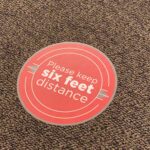
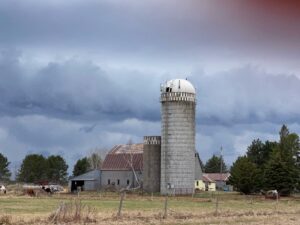

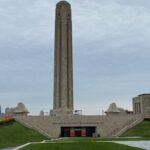
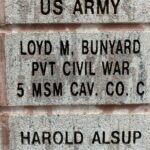

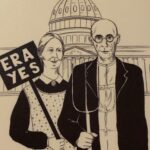
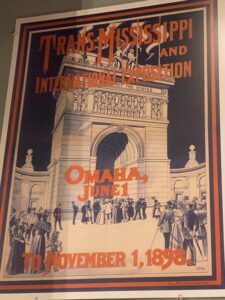
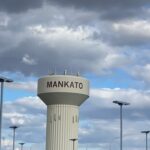
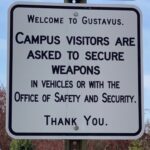
0 Comments